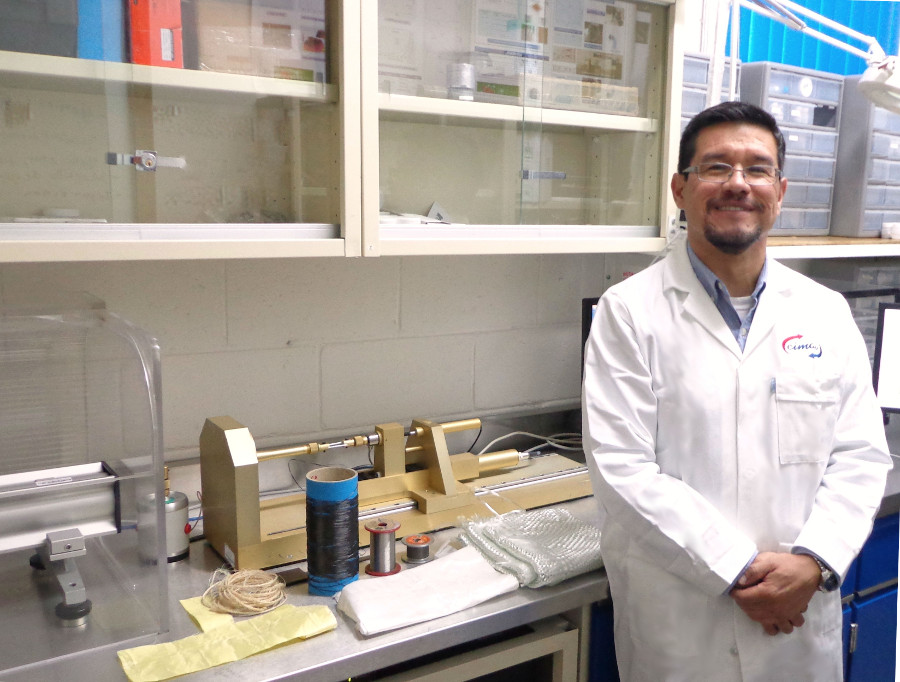The study of fibers is large and diverse. For example, the CIMAV working team researches the properties fibers have in bulletproof vests. They analyze, among other things, tensile strength and their behavior towards the environment. They have characterized the fiber, the yarn (which is integrated by 220 fibers) and the ballistic material products of three generations. The first generation is based on knitted fabric, the second one is made up of unknotted fabric and the latest one is made up with ultra-high-molecular-weight polyethylene, which is more resistant than the previous ones. The materials are subjected to laboratory physical testing to simulate environments of marine areas and extreme solar radiation.
The research results provide to industrial companies a broader knowledge about their materials to improve the design of bulletproof vests, whose objective is to catch and deform a projectile and absorb its energy when it impacts on them.
Synthesis and characterization of composite materials with applications in the automotive, aeronautics, aerospace and medical industries
The CIMAV working team synthesizes and modifies the composition of materials, especially metal-base used in the automotive, aeronautics, aerospace and medical industries. This research consists in strengthening them with fibers, ceramics and oxides in order to reduce their density and increase their mechanical strength.
Experts have conducted research projects on different materials such as nickel, aluminum, magnesium and titanium.
CIMAV researchers have improved mechanical properties up to 300 percent in studies on aluminum alloys.
Studies have been made on titanium-base alloys for medical implants, analyzing their mechanical and microstructural properties and performing failure analysis and biocompatibility tests.
Researchers have made projects in collaboration with the Universidad Nacional de Colombia with its headquarter in Medellin about aluminum and magnesium reinforced with carbon nanotubes to increase their mechanical properties. The result of these investigations have been positive because they have potential applications in various industries: from the automotive one on car wheel rims up to the aeronautics one in aircraft structural components.
Researchers from CIMAV-Unidad Monterrey, Universidad Autonoma de Nuevo Leon and Instituto Tecnologico Superior de Irapuato are developing different coatings to enhance the properties of hardness, wear, oxidation, strength to temperature changes and radiation of materials to be applied on CubeSat satellites in a multidisciplinary project. They have participated with institutions such as the Instituto Politecnico Nacional, the Universidad Autonoma de Baja California, the San Jose State University and the NASA-Ames Research Center.
Synthesis and characterization of geopolymeric materials and concrete reinforcement with recycled fibers
This group of researchers has also the scientific and technological experience to synthesize and characterize geopolymeric materials (sustainable cements activated by alkalis). It is sought to generate less polluting materials with either similar or superior properties to those of the ordinary Portland concrete. It has been achieved the 50% reduction of the CO2 (carbon dioxide) emissions, compared with ordinary cement.
A technique was designed to reinforce concrete with continuous strips of PET waste bottles. The result showed that a high adhesion between the PET strips and concrete, an increase in flexural strength, ductile behavior and energy absorption capacity exist. Besides that, the fact of using PET waste bottles as a reinforcing material contributes to generate an advantage in the preservation of the environment.
The mentioned investigations are only an example of the potential that this group of researchers have.

